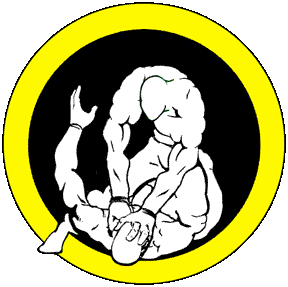THE MMA PROFESSOR PROVIDES HIS PROFESSIONAL TRAINING ADVICE
Posted on | July 11, 2007 | 3 Comments

LEARNING VS. RE-LEARNING
BY: CHARLIE WARD, CMIT – THE MMA PROFESSOR © 2007
[mpinpage]
We’ve all heard this before: “You can’t teach an old dog new tricks.” There are many other quaint little sayings that make the same point; Once someone is set in their ways, it is very difficult for them to change. The change in question could be purely behavioral, purely physical, but most likely it’s a combination of the two. While I agree that changing an ingrained behavior, skill, or habit can be difficult—it is not impossible.
If someone makes the conscious decision to willingly accept whatever change is needed, then success will follow. However, without that constant, conscious reminder, the person quickly reverts to old habits.
This can be extremely frustrating for martial arts students who are cross-training in various art forms, or who make a switch from one art form to another. Chances are good that several techniques will be similar, or even the same in some cases, but there are almost always subtle nuances that each instructor passes on to his or her students. These subtle differences manifest themselves not only in how the student physically delivers each technique, but also in how the student perceives each technique taught in every lesson.
If you happen to fall into the category of a student who is cross-training, or has switched from one art to another, then you can do yourself—and your instructor—a huge favor by approaching each lesson with an open attitude towards the learning process. Sometimes you will catch yourself thinking (or saying) something like, “But I learned it this way before”—or “We didn’t do it this way at my other school”—and so on. If you notice this happening to yourself, you should quickly adjust your thinking and internal dialog. Make the conscious decision to put previous lessons on the shelf, and open your mind to a different approach. Otherwise, your subconscious will resist the new material without you even knowing it. Ask yourself what kind of art form you are currently studying. Is it a sport-type of martial art, an aesthetic art form, or a no-nonsense combat system? There is a world of difference between those distinctions, and often that will mean a different approach in teaching methods and techniques.
I want you to consider this African proverb: “If you refuse to be made straight when you are green, you will not be made straight when you are dry”. The term “green” refers to a beginner experiencing something new. Now make no mistake here, whatever rank you might have held in another art form—if you are training in a new and different art form—then you have once again become a beginner. If you can let go of your ego long enough to consciously tell yourself that you are “green”, then you can re-learn certain lessons and be made “straight”, or correct, in your new art form.
This open attitude is entirely up to the student to perform. The instructor, no matter how hard he or she might try to instill this proper attitude, cannot do it for you. It is up to you to willingly, and consciously, make this change within yourself. Can people really change themselves? Yes. Is it difficult? Definitely, but it can be done! Ask yourself if this is a change you really want to make. If the answer is yes, then you have the motivation right there at your disposal. This adjustment will make your life in training much easier and more enjoyable—not to mention your instructor’s life as well!
[/mpinpage]
Tags: art > art form > art forms > category > Chances > change > charlie ward > cmit > combat > combination of the two > conscious decision > cross training > difference > ego > form > Habit > Instructor > lesson > martial arts students > nbsp > old dog new tricks > old habits > open attitude > person > professional training > Professor > proverb > reminder > sayings > shelf > someone > something > student > subconscious > subtle differences > subtle nuances > System > technique



